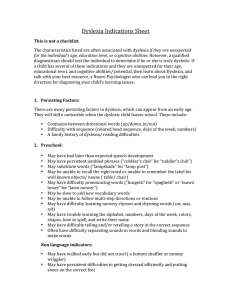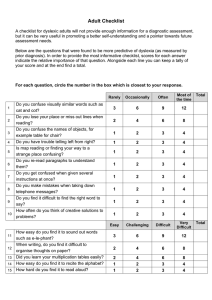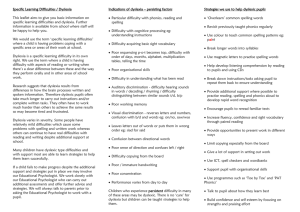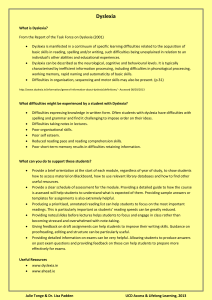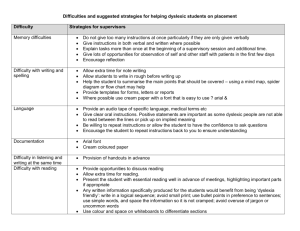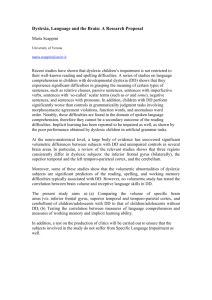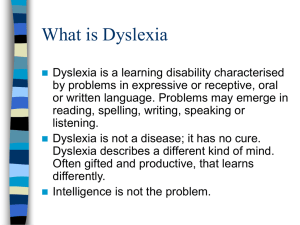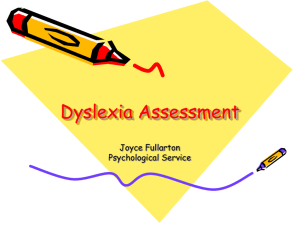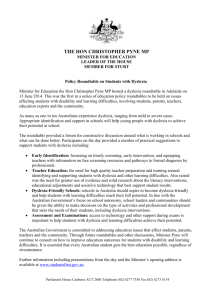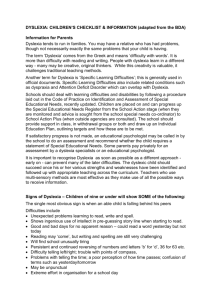Slide 1 - St Maria Goretti Catholic Primary School
advertisement
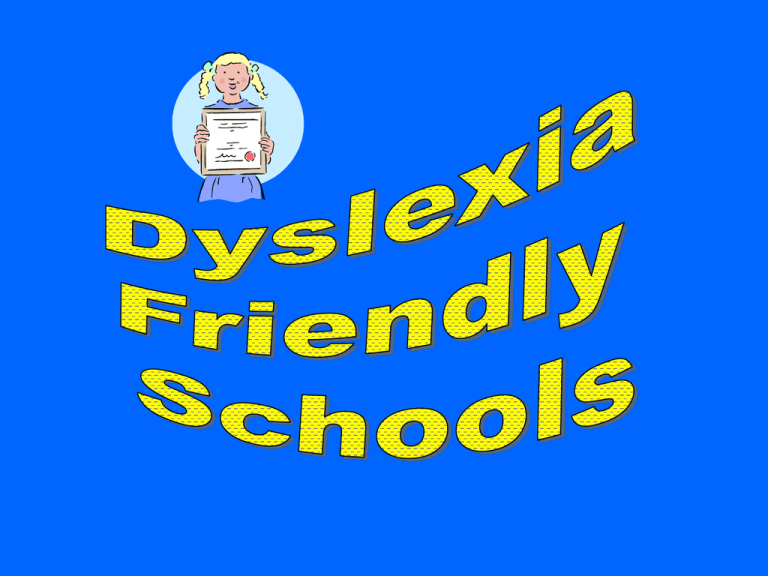
Making Friends • Tell the person next to you what you did last night. • You are not allowed to use the letter s in any of your words Ορίστε γνωρίζει θα τον, μα ιδιαίτερα δημιουργική των, χαμηλός δοκιμάσεις κι ναί. Γραφικά κώδικάς ανταγωνιστικούς μη όχι, αν μάλλον εντυπωσιακό εγώ. Και αφού άμεση το, εκθέσεις ζητήσεις με έχω, έξι παίρνει παραγωγικής πω. Σε ένα ανώδυνη φακέλους. Τα πρώτες σφαλμάτων συνεντεύξης που, κι τύπου ξέχασε κρατάει την. Στις εργαζόμενοι χρησιμοποιούνταν πες να, ως συγγραφής What is dyslexia? • A learning difference that results in difficulties with reading, spelling and writing and sometimes maths • A combination of strengths and weaknesses – just like any other learning style • Problems occur because of inappropriate teaching, lack of recognition and because of our assessment emphasis How does the ethos need to change? • Shift from remedial type support to making the classroom an effective learning environment • We don’t need a diagnosis. All teachers are empowered to take front line action • Early recognition leads to early intervention in the classroom. • This is a learning difference that leads to a difficulty if we allow it. How do we know which children we are talking about? • Most dyslexics show good oral ability and appear bright and able but can’t translate that onto paper. They also often have: • areas that they excel in like drama or art • directional confusion • short term difficulties • difficulties saying multi syllable words • difficulties with reading comprehension. Identifying 2 • difficulties with handwriting • difficulties with spelling • problems with omitting lines or words in reading • poor organisational skills • They will nearly always have poor self esteem So what can we do? • Visual cues and clues around the classroom • Make our whiteboards coloured • Help with copying – notes on paper • Step by step instructions • Allow extra time – don’t punish for struggling • Be patient – you may need to explain things several times Dyslexia Friendly Classroom • Use a multi sensory approach in teaching • Give these children chance to shine – use of drama, debating • Be creative about recording – scribes, tapes, computers • Help children with text - a pointer, a chance to read beforehand • Teach handwriting in small groups • Allow memory aids E.g frames, multiplication tables Working times tables out using fingers Always make sure your palms are facing you. Your thumbs are six, your index fingers seven etc. If you want to work out for example 7X8, join one index finger to the opposite middle finger. Underneath the joined fingers you will have three loose fingers on one side and two on the other. Multiply these two numbers (6). Each finger that is joined plus each finger above it is worth 10. Therefore in this case you will have 50. Add this to the 6 you have already made and you have 56. Dyslexia Friendly Classroom • Help to do systematic jobs – tidying a drawer, packing a bag • Use of a reading ruler • Mind mapping • Teach to scan, skim and read from pictures • Paired reading • Allow dyslexic child to sit near front Paired Reading • Child chooses a book they want to read • Read at same time as the child, pointing at the words • Read over the errors • Don’t make child sound out • Allow time to look at pictures • Back off slowly (e.g. allow child to read initial sound alone, support when necessary) Dyslexia Friendly Classroom • When reading and recording keep movement and noise down – distractibility factor • Use of study buddy • Bite size chunks of learning • Use of colour • Clear timetable • Don’t ask to read aloud unless child is comfortable Marking Work • Be sensitive to the child’s difficulties and encourage for effort – it can be exhausting for some dyslexic children to produce a piece of writing • Don’t correct spellings unless it’s a spelling test – mark to the objective • When marking spellings, don’t mark spellings wrong for letter reversals - soul destroying for them. This can be addressed in handwriting Extra Intervention • Most intervention is discrete but some extra intervention can be useful at given time e.g. • Toe by Toe • Memory skills In Conclusion • Respect the dyslexic child as a learner with intelligence and much to offer • If we work hard at this we should reduce the need for many of these learners to fall further behind • “If they don’t learn the way we teach, then teach the way they learn.” • If we are a dyslexia friendly school, many more pupils will benefit

